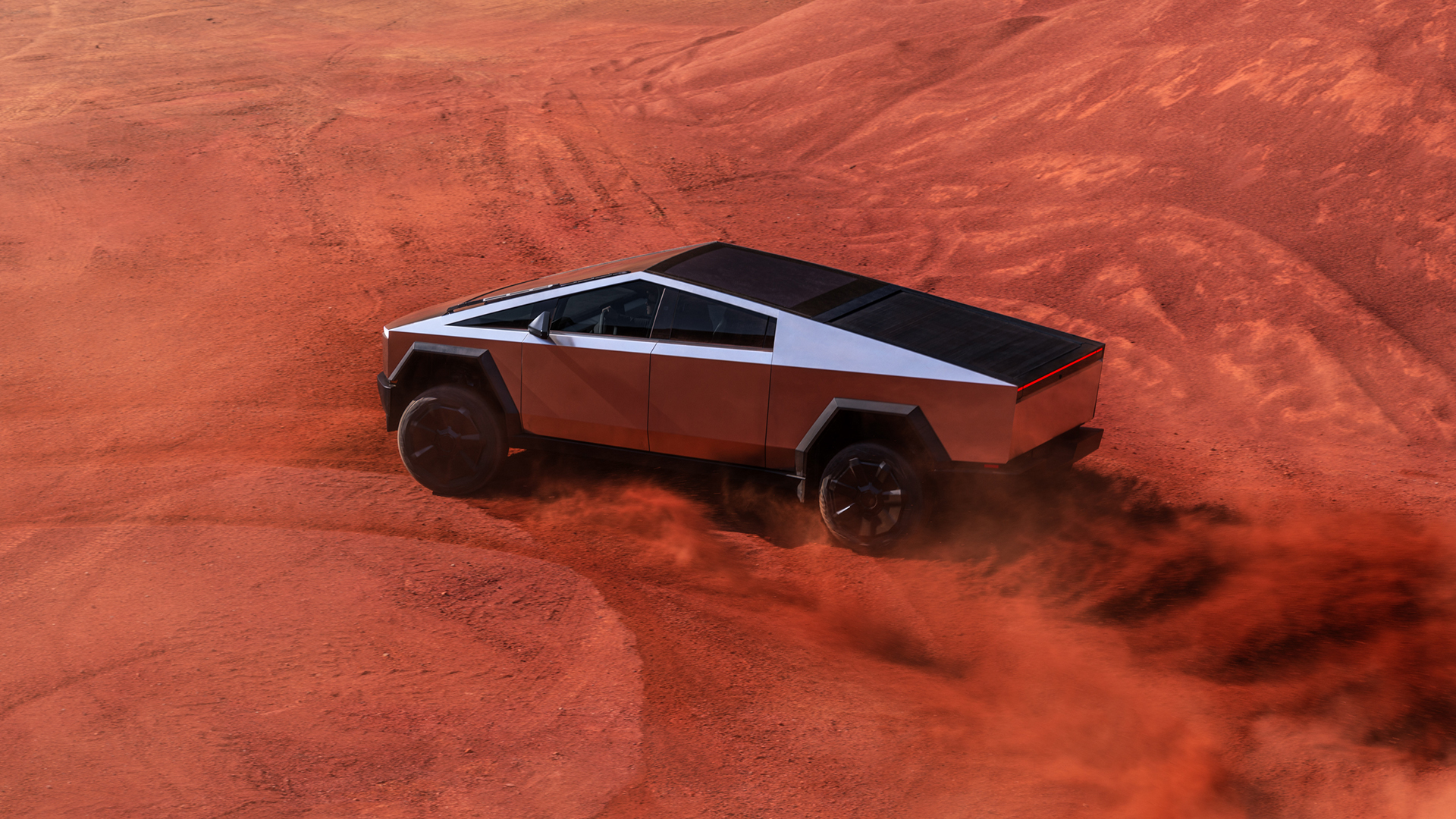
Elon Musk arrived at his Gigafactory in Texas aboard a spanking new Cybertruck, pulling up to receive applause from the thin crowd and then delivering the remainder of his seemingly ad hoc presentation from the dimly-lit bed of his electric pick-up.
Unfortunately, the lighting crew didn’t get the memo, so most of the event’s livestream involved Musk delivering rehashed nuggets of information in the dark, overseeing a person limply throwing a baseball at the windows (surprise, surprise, they didn’t smash this time) before wrapping things up by handing a mere handful of trucks over to new owners.
Ironically, seeing as Musk failed to reveal the price at the event, most of these proud new Cybertruck patrons drove away not knowing what they actually paid for the thing. Early adopters, eh?
Thankfully, Tesla’s website was quickly updated following the event, leaving folk like to me scour the numerous pages for useful information. Here’s what I discovered…
1. Prices start at $61,000
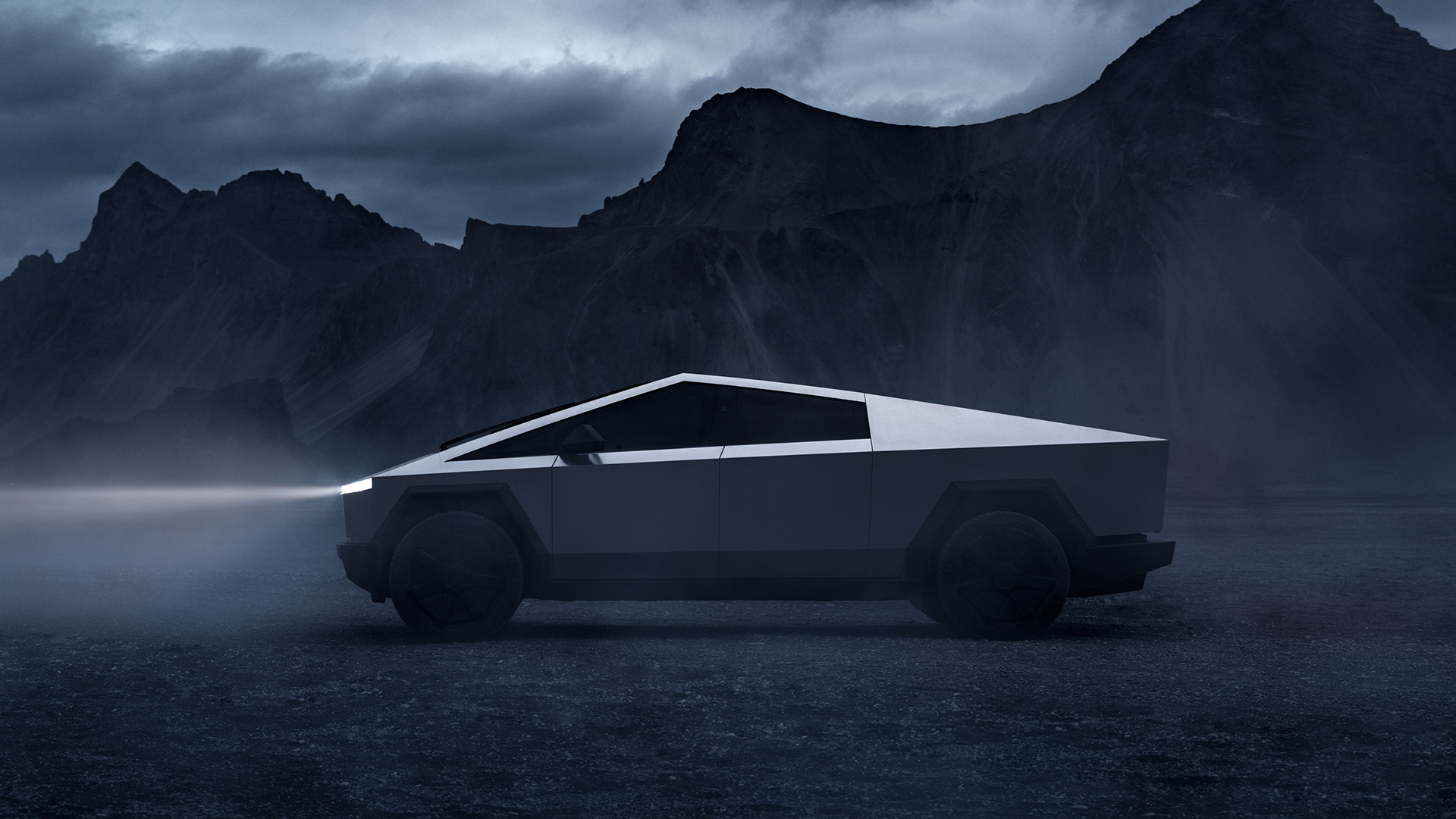
There was nary a mention of pricing at the Gigafactory delivery event, so it was down to some Tesla website sleuthing to get a proper grasp on how much Cybertruck will cost.
Available in three distinct versions (Rear-Wheel-Drive, All-Wheel-Drive and CyberBeast), Cybertruck will start at $60,990 (around £48,200 / AU$92,160) and offer a rather disappointing electric range of 250 miles. Although this is still an estimate, according to Tesla’s website, and could realistically be as stingy as 200-miles in the real world, especially if you are towing.
It’s also worth noting that the Rear-Wheel-Drive model is also the slowest of the pack, with a 0-60mph time of 6.5 seconds (still plenty enough for a pick-up truck) and a top speed of 112mph. It can tow a max capacity of 7,500lbs (3,400kgs).
Prices then jump to $79,990 (around £63,150 / AU$120,740) for the All-Wheel-Drive version, which has an estimated range of 340-miles and a 0-60mph sprint time of 3.9 seconds. This model has the same 112mph top speed but can tow up to 11,000lbs (4,989kgs).
Finally, the top spec CyberBeast costs $99,900 (around £79,000 / AU$150,915), but sees its electric range dip to 320-miles due to its punchy performance credentials. The 0-60mph sprint is completed in 2.6 seconds and the top speed is pegged at 130mpg. The same 11,000lbs towing capacity remains intact.
Alas, the website only lists USA, Canada and Mexico as regions available in its configurator, so there's still a big question mark hanging over whether we will see the electric pick-up arrive in other markets.
2. There’s a range-extending option
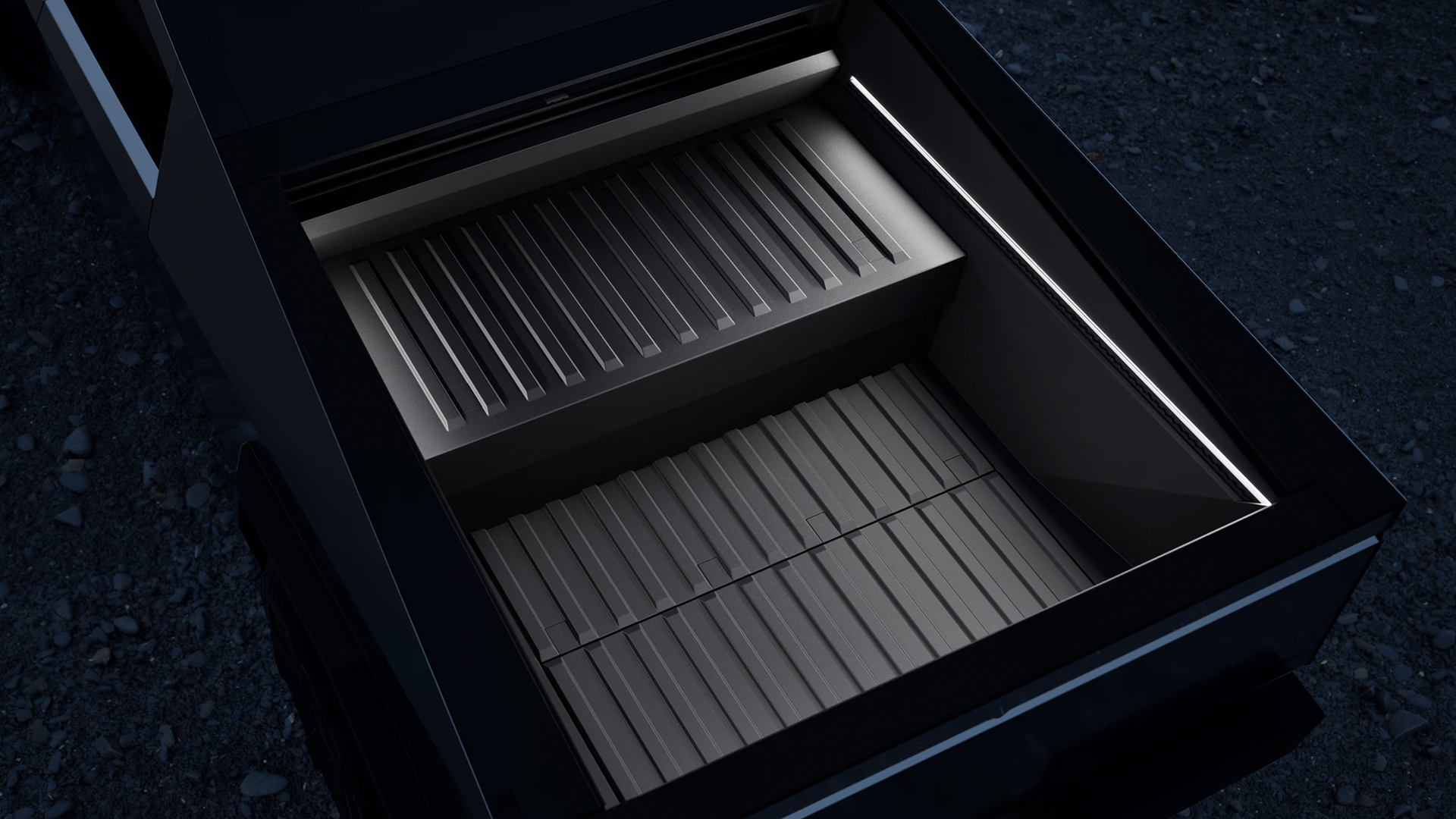
Optional pack that fits in about 1/3 of the truck bed. Still room for plenty of of cargo. It’s meant for very long trips or towing heavy things up mountains.November 30, 2023
When most manufacturers talk of "range-extenders", it is typically in reference to a small internal combustion engine that acts as a generator to charge an EV’s battery packs. You can check out the BMW i3 and the Mazda MX-30 R-EV for more info on that.
But Tesla confirmed the range extending technology destined for Cybertruck involves an optional battery pack that fits in the Cybertruck’s bed. When optioned, it can add around 130-miles of range to the All-Wheel-Drive and CyberBeast models. There’s no mention of it where the Real-Wheel-Drive model is concerned.
There is also no mention of price, nor how heavy this seemingly very large battery pack will be. Seeing as it is fitted to the rear bed, thus taking up precious cargo space, it is something customers will only fit when more range is required.
Whether or not that’s possible to do with a few burly friends, or whether it is a dealer fit device, remains to be clarified.
3. Cybertruck is fast
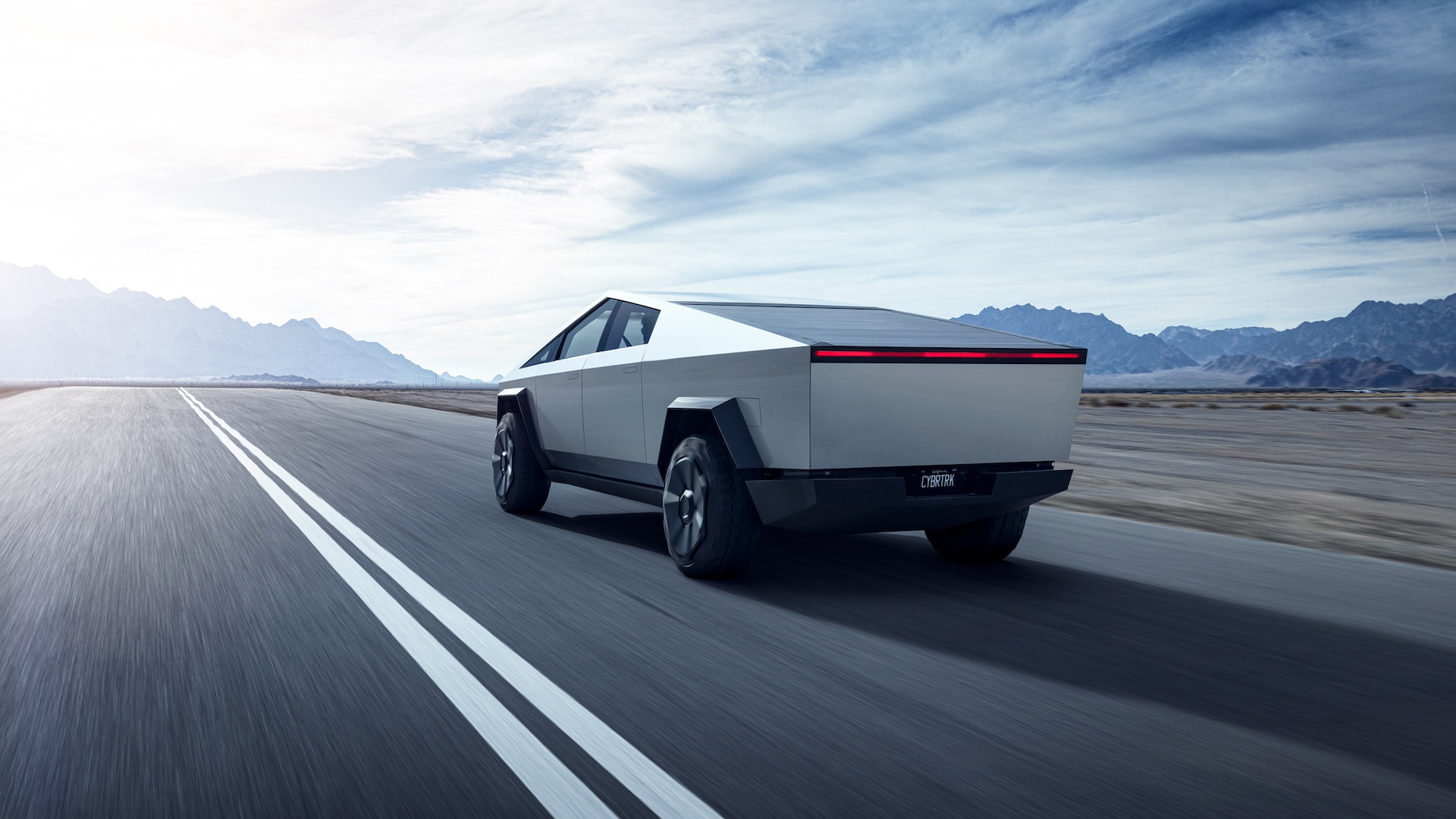
Perhaps the one key takeaway from the delivery event was that Cybertruck will happily out-drag a Porsche 911… while towing a Porsche 911. It was a great PR stunt, but it also revealed the most potent versions of Elon’s electric pick-up will manage to crack the coveted 0-60mph sprint in a face-melting 2.6 seconds.
Elon went so far as to claim that Cybertruck is "more utility than a truck, faster than a sports car", which he attempted to prove during a YouTube-worthy drag race segment.
However, we all know drag racing isn’t the be-all and end-all of any fast vehicle, while anyone with even a mild understanding of sports cars will naturally gravitate towards the Porsche 911, given that it is not only fast in a straight line, but will also brake and go around corners thanks to not weighing almost three tonnes (6,603lbs). Factors that are extremely important when choosing a sports car.
4. Off-road capabilities were confirmed
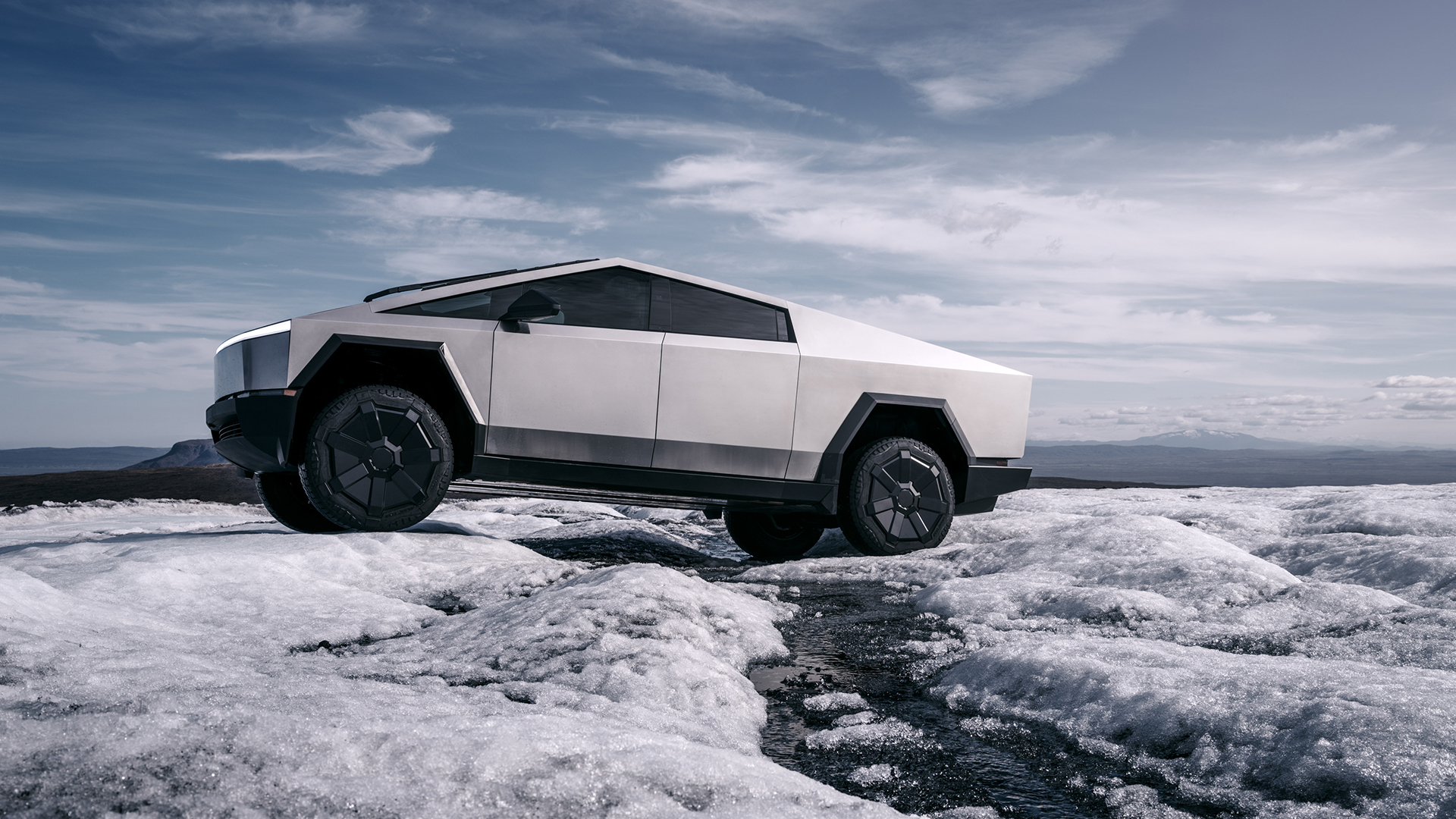
We saw a glimpse of Cybertruck’s air suspension system in a leaked video prior to the big delivery event, but Musk confirmed his electric pick-up features air suspension at each wheel, which allows for 17-inches of ground clearance.
Elon was keen to point out that is a "true 17-inches", seeing as the Cybertruck’s flat floor means there’s no transmission mechanicals impeding on that figure.
What’s more, Musk confirmed Cybertruck has "locking differentials and all-wheel-steering", which helps reduce the turning circle of this hulking machine. In fact, the turning circle is tighter than the one found on Tesla’s Model S.
Easy maneuvering is further aided by steer-by-wire technology, which essentially eliminates the physical connection between the steering rack and wheels, allowing Tesla to introduce electrically-controlled motors to take care of steering angle.
At lower speeds, smaller steering wheel inputs will have a much greater effect on steering angle, while the opposite happens at higher speeds to ensure the ride is safe and predictable.
5. It packs bidirectional charging
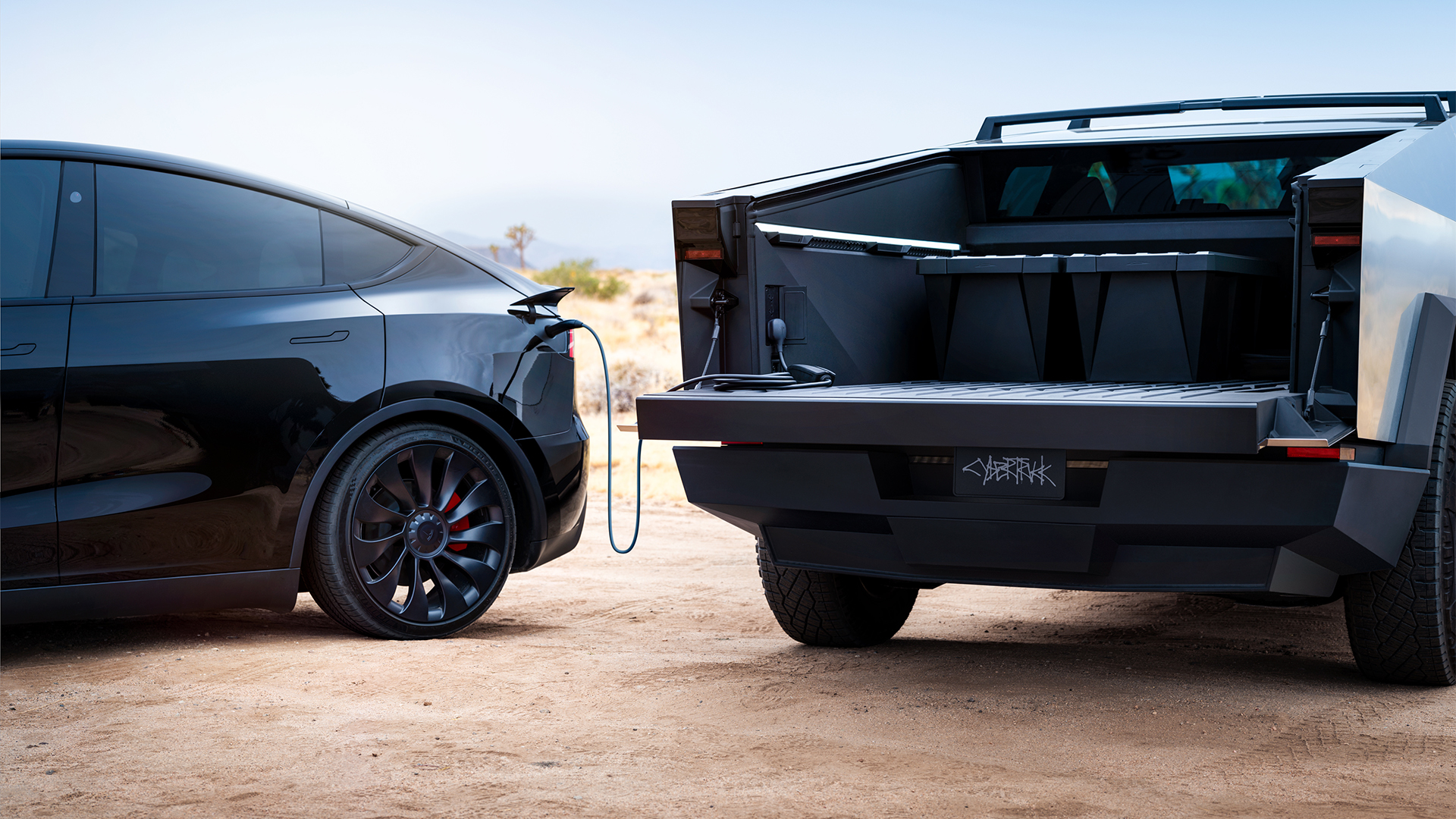
Nissan, Honda and a handful of other so-called 'legacy' automakers have been experimenting with bidirectional charging for some time now, seeing true value in being able to power homes, external devices and even other electric vehicle’s from powerful onboard battery packs.
Powershare is the Tesla-branded version of the same technology, which is equipped on Cybertruck, but we could also see it rolled out to other Tesla models in the near future.
According to the Tesla website, Cybertruck can power the home (otherwise known as V2H, or vehicle-to-home), run power tools (V2L, or vehicle-to-load) and share charge with other vehicles when family or friends need it (V2V, or vehicle-to-vehicle).
However, there is no word on whether or not Powershare comes as standard across the entire Cybertruck range, or whether it is a costly optional extra.







